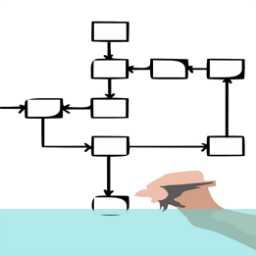
We’d like to think that seeing products from customers’ perspectives is pretty straightforward. We know how they’re supposed to work, and the funnels each user will be subtly guided down. So it’s all pretty straightforward, right?
Sadly, without actually being able to get into our customers’ heads, and given our predisposition to our personal views, expectations, needs, and a whole host of cognitive biases, it’s not always as easy as we think.
So how do we find out who our most likely user is, and better still, how do we get into their heads?
Bringing what your users actually experience and feel to life takes clever storytelling. Understanding exactly how that story unfolds takes intelligent UX research—instead of leaning on the assumptions we’re far too good at making, those that align with our expectations and not our users’ authentic experiences and feelings.
What better way to tell a story than to convert it into a graphic version our brains not only absorb easier—in a more attractive and engaging (and less effort-laden) manner—but one that triggers the empathy we need to truly understand what our users, visitors, and customers feel. It’s nothing too groundbreaking; we’ve been doing it for as long as we’ve had communication—from cave painting to comic books to novels and movies.
Illustrating our customers’ experiences by exploring UX research design, user journey tools allow us our best chance of feeling what they feel—their excitement and their frustration—showing us a clearer picture of what needs fixing and what we can do to enhance our processes.
So, how do we find out what to put in this brilliant illustration and representation? From our UX research, of course.
What are the best UX research methods to design your project?
Despite the vast range of research tools and avenues available, throwing out an all-encompassing super-wide net is costly and often unnecessary. Instead, honing your methods to those delivering the most appropriate data is a great way to manage resources while gathering the data sets needed to understand how your users feel and build your journey map accordingly.
Explore existing data for low-cost indicators to where pain points may be occurring
Every business holds masses of data whether they recognise them as valuable reference points or not.
Such streams include qualitative data from previous studies, focus groups, and interviews. But what about your customer service records? How many calls or emails concern complaints, outages, or problems with operation, acquisition, or billing?
We can also consider our products’ levels of customer satisfaction through churn, loyalty, and usage, but can we decipher whether those interactions are done through necessity or pleasure or that our product is so sticky it’s impossible to resist?
Access outside resources to design a user journey
Why not access direct user sentiment from review sites and social media when considering customers’ emotions and a process’s pain points? We often find that users hold back their true feelings in face-to-face and even written interviews and procedures, but when it comes to avenues that provide a bit more anonymity, they’re more likely to let their feelings flood out. As an alternative, we can build a clear picture of how users truly feel about our products by utilising social tracking and social media monitoring.
Don’t be too quick to write off quantitative data sources
Despite looking for qualitative data that reveals users’ feelings and emotions, we can often gather information about where those emotional situations happen. Using quantitative data such as landing and leaving points, customer satisfaction scores, and other hopeful tell-tale analytics, we’re given direct clues to where the issues happen on the journey.
Conducting qualitative research
The best way to find out how people feel while using your products is to ask them. So for journey mapping, qualitative data gives us a lot more of the information we need to paint an accurate picture than our quantitative data does.
What are the usual ways to understand the feelings, emotions, mindsets, and motivations behind attitudes, satisfaction levels, and interactions?
User interviews
In-person, online, or telephone interviews allow us to hear first-hand how users feel during interactions, activities, and exploration of our products. They also allow us to ask follow-up questions that nail down where situations didn’t deliver as intended.
Asking the right questions is vital. To define an accurate journey map, you must dive into each action and step of the process. For example, instead of asking how they found navigating a payment gateway, a search facility, or installing a trial version, ask them what the specific challenges were in each situation and how they made them feel.
Leaving questions vulnerable to vague or empty answers won’t provide the data you need for a genuinely accurate journey map.
Field studies
If you can pair your interviews with field studies—direct observation and contextual inquiry, for example—you can double up on valuable information, validating actions and reactions or uncovering issues unlikely to be revealed during an interview or on a questionnaire.
Field studies can take many forms, but typically they monitor users operating your product or interacting with your operators. We mentioned earlier that users aren’t always confident in openly discussing uncomfortable situations, often telling us what they think we want to hear. Monitoring them in action removes many discrepancies between saying and doing and uncovering ways around systems you might never have thought your site or app was capable of.
Competitive analysis
Whether planning a new app, site, or feature or investigating an existing product to evolve and improve it, pitching your users’ views and feelings surrounding your development against your competitors can reveal a great deal. The customer journey map is all about empathy, and a direct comparison can highlight plus and pain points through simple user testing.
Diary studies
Our final suggestion covers user attitudes and emotions over time. Diary studies deliver long-term views and feelings of regular product use, allowing for how product use or features may change or alter deeper into the experience. In addition, a diary study captures the user’s feelings as close to real-time as possible, where questionnaires and interviews are subject to inaccurate remembering and subsiding emotions.

Mix and match for multiple-method coverage
Any of the methods mentioned above will uncover valuable data, but where time and resources allow, mixing and matching each of them and the numerous other UX research methods available will paint a far more accurate and inclusive picture.
Admittedly, sometimes less is more, so deciding if there’s one method that covers all you need to learn about your users to apply their journey to your goals could be the golden egg you’re looking for. That said, we usually find a mix of qualitative and quantitative research reveals the most significant and revealing picture, and the range of methods in each frequently differs from product to product and client to client.
The value of journey maps to product owners
For product owners, there’s so much to gain from building journey maps and better understanding their users. With a better grasp on their motivations and needs, it helps to deliver the app or site your users feel most aligned with, enjoy using, and are more likely to commit to continuing engagement boosting customer loyalty.
Not only will product owners better understand their users, but also how they use their products. As owners, designers, and developers, we have a definite idea of how each product should work and how it should guide users to complete our hopeful goals. However, research often finds those routes and funnels not functioning quite how we imagined. Uncovering those anomalies allows product owners to correct them and use those new insights into a particular user operation or interaction to build something better aligned with their habits and practices.
By engaging in UX research design, user journey maps help to improve the customer experience, our bank of insights, our goal states, and the efficiency of our online and offline operations.
In conclusion
The benefits of journey mapping are wide-ranging and many. First, there’s so much to learn from understanding our users’ behaviours, who they are, and how they think and feel. This incredibly revealing data helps all members of the process: UX researchers and product owners understand their users, clients, and customers better, UX designers and developers create better customer experiences aligned with what users want and need, and your wider teams will better understand who they’re marketing, speaking, and reaching out to, to drive more of who and what they need into the funnel.
If you haven’t explored journey mapping as part of your product strategy, now’s the time to start. This valuable tool could provide the edge over your competitors you’ve been looking for. After all, who doesn’t need more, happier, engaged, and loyal customers to feed a constantly growing bottom line at the end of each month?
If you would like to know more about user journey mapping, get in touch at hello@ux247.com.





